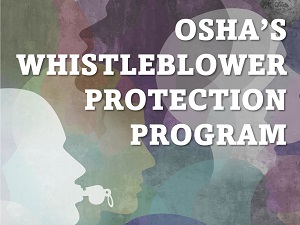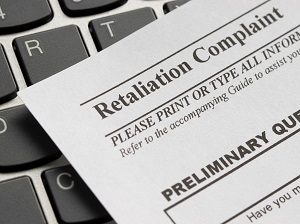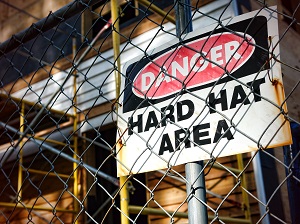Whistleblower protections don’t just apply to large companies or government agencies. The law says that employers cannot retaliate against workers for exercising their rights to a safe and healthful workplace.
Employees should be aware of their rights so they can be an advocate for their own safety, and employers should be familiar with law to ensure they are providing all the protections their employees are entitled to receive.

The Occupational Safety and Health Act of 1970 (OSH Act) was passed to prevent workers from being killed or seriously harmed at work. The law requires that employers provide their employees with working conditions that are free of known dangers.
If a worker believes working conditions are unsafe or unhealthful, OSHA recommends that they bring the conditions to the employer’s attention, if possible. This provides the employer the opportunity to be made aware of the situation and provide corrective and preventative action.
The OSH Act protects workers who complain to their employer, OSHA, or other government agencies about unsafe or unhealthful working conditions in the workplace or environmental problems.

A worker may file a complaint with OSHA concerning a hazardous working condition at any time. However, workers should not leave the worksite merely because they have filed a complaint. If the condition clearly presents a risk of death or serious physical harm, there is not sufficient time for OSHA to inspect, and, where possible, a worker has brought the condition to the attention of the employer, the worker may have a legal right to refuse to work in a situation in which they would be exposed to the hazard.
If a worker, with no reasonable alternative, refuses in good faith to expose themselves to a dangerous condition, they would be protected from subsequent retaliation. The condition must be of such a nature that a reasonable person would conclude that there is a real danger of death or serious harm and that there is not enough time to contact OSHA and for OSHA to inspect. Where possible, the worker must have also sought from their employer, and been unable to obtain, a correction of the condition. For more information, visit www.osha.gov/workers.

OSHA’s Whistleblower Protection Program enforces federal laws that protect employees from employer retaliation after raising or reporting concerns about workplace hazards or violations. Employees who believe that they have experienced retaliation at work after they have raised a concern may file a complaint with OSHA.
There are over 20 statutes that offer retaliation protection and each one has a different time frame in which a complaint can be filed by an employee, typically 30 – 180 days (or 1-6 months).
Employees who believe that their employers retaliated against them because they engaged in protected activity will need to contact OSHA as soon as possible because they must file complaints within the legal time limits.

It’s important that employers understand what retaliation means and why they can be liable if actions are taken against an employee after they raise a health and safety issue to management. Retaliation can include adverse actions against the employee like:
- Firing or laying off
- Blacklisting
- Demoting
- Denying overtime or promotion
- Disciplining
- Denying benefits
- Failing to hire or rehire
- Intimidation or harassment
- Making threats
- Reassignment affecting promotion prospects
- Reducing pay or hours
- Isolating, ostracizing, or mocking
- False accusations of poor performance
- Reporting, or threatening to report, to the police or immigration authorities
OSHA Standard 1977.12(b)(2) Occasions might arise when an employee is confronted with a choice between not performing assigned tasks or subjecting himself to serious injury or death arising from a hazardous condition at the workplace. If the employee, with no reasonable alternative, refuses in good faith to expose himself to the dangerous condition, he would be protected against subsequent discrimination.

When OSHA receives a complaint from an employee through the Whistleblower Protection Program, OSHA will first review it to determine whether certain basic requirements are met, such as whether the complaint was filed on time. If so, the complaint will be investigated in order to determine whether the employer retaliated against the employee for engaging in activity protected under one of OSHA’s whistleblower laws.
OSHA may also attempt to assist the employer and employee in reaching a settlement of the case. The parties may settle the retaliation complaint at any point in the investigation through OSHA’s Alternative Dispute Resolution (ADR) program or through their own negotiated settlement that OSHA approves.
If there is no settlement, at the conclusion of the investigation, the investigator will make a recommendation to their supervisor regarding whether the evidence provides reasonable cause to believe that there was a violation of the law in regard to retaliation. Additional actions may take place depending on the outcome of the investigation.

Employers and employees can find more information on OSHA’s Whistleblower Protection program by visiting whistleblowers.gov or by downloading OSHA’s Fact Sheet on the program.

.jpeg)
